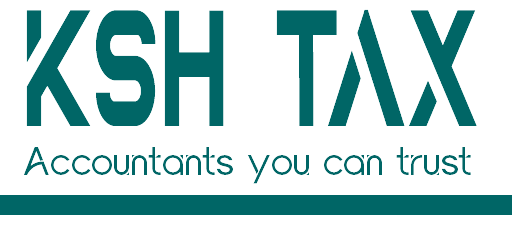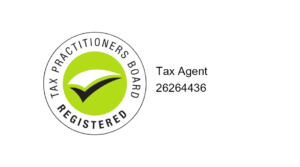Tax at source is not only deducted from Australian residents but also deducted amongst foreigners who earn from Australian income sources. But did you know that taxes withheld from non-residents vary from Australian residents? This is due to factors such as tax rates and the nature of their income. Let’s dive deeper into our blog post to understand better and answer some questions to get more insights: Tax Withheld at Source for Foreigners in Australia Non-residents who earn their income in Australia will constantly be subjected to paying their taxes to the ATO. The employer is responsible for withholding a certain amount of money and remitting it to the government before paying the employee their net salary. Some of the taxes that non-residents might be subjected to include dividend income, royalties, interest income, and more. The WHT rates could vary depending on the type of income a non-resident receives and also on factors like whether they are from a country with a tax treaty with Australia or not. Knowing whether your country is in a treaty with the Australian government is always essential, as this would lead to a lower WHT rate from your side. Who pays tax at source as a foreigner? The Pay As You Go (PAYG) system specifically requires employers and financial institutions, among other payers, to withhold taxes on foreigners’ payments. Here are some of the examples of individuals who may have their tax withheld at the source; 1. Foreign employees working in Australia Your employer must withhold tax at the applicable rate and submit it to the government, whether you are working temporarily or permanently. 2. Foreign contractors If you are a foreign contractor, your tax may be withheld by your company or clients. 3. Foreign investors Foreigners who earn income from Australian investments, including interest and dividends, will always have their tax withheld at source. Tax rates for non-residents Non-residents’ tax rates are not the same as residents’. This is because foreigners pay much higher taxes at the source but don’t benefit from tax offsets and exemptions available to residents. FAQs Do foreigners pay taxes? According to ATO, as a foreigner working in Australia, you need to pay taxes, and that is if you are earning your salary from an Australian source. This is to ensure that you have met the required tax obligation of you by the government. However, foreigners/non-residents are exempted from paying taxes acquired from outside Australia. How much tax do foreigners pay in Australia? Foreigners (non-residents) in Australia pay tax on income earned from Australian sources, but their tax rates may differ entirely from those of residents. Is Australia tax-free for foreigners? Australia is not tax-free for foreigners because those who earn from Australian sources are very much eligible to pay their taxes to the government. Is foreign source income taxable in Australia? For Australian residents, income earned from any source, regardless of where it originates, is generally taxable by the Australian government. This means that even if you earn income outside of Australia, you may still be required to file for taxes in Australia. As for foreigners, they are not taxed by the ATO on income earned outside of Australia. Is tax collected at source refundable for foreigners? Foreign residents may have more limited options for tax refunds than Australian residents. This is because the tax rules and available deductions can differ for non-residents. In cases where the government withholds a lot of taxes, upon filing their returns at the end of the financial year, they may request for and receive a refund. Non-residents are not eligible for the low-income tax offset and, hence, cannot claim the tax-free threshold like Australian residents. Conclusion For foreigners, taxes at source are deducted to ensure they meet their tax obligations while earning from Australian sources. The system used for foreigners is similar to that of residents but with different tax rates and fewer deduction opportunities. Do you need advice on taxes and how to proceed? Contact us for a free consultation today!
Your Guide to Tax Planning in Australia
With the right approach, tax planning has helped many individuals and businesses in Australia save on taxes and manage their finances effectively. It’s no secret that some have even managed to save themselves from the shackles of taxes since they’ve secured a tax-free savings plan. Whether you are a business or looking for effective ways to manage your money, tax planning must play a massive part in your decision-making. Our blog post will guide you on the specifics you need to know when it comes to tax planning right below: Why tax planning matters In our daily lives, strategizing our financial plans to minimize your tax liability and plan for future obligations is the right thing to do. To develop the right plan, you must understand your available deductions, offsets, and anything tax-related. With us are some of the more reasons as to why tax planning matters as follows; 1. Save on Tax Learning how to devise tactics to cut costs on your taxable income properly can save you a lot of money. This is all possible because, through a proper tax planning strategy, you can save yourself some money that can be useful in the near future for other engagements. 2. Cash flow management Keeping track of and timing your income and expenses can help you prepare and manage your cash flow effectively over the years. Through preparation and planning, you will be saved from the headache of having to complete your tax obligations without knowing where you spent most. It also prevents unexpected tax bills from piling up and disrupting financial stability. 3. Compliance Tax planning will help you stay ahead of the tax laws and avoid deadline penalties and interest that may be incurred with late tax filing. You can stay compliant with the tax rules by exercising your duty as an Australian law-abiding citizen. 4. Minimize tax liabilities Do you know you can keep more of your hard-earned money through tax planning? This is possible because you can quickly identify and utilize your eligible deductions and credits, reducing your overall tax burdens. 5. Financial goals achievement Tax planning helps you save more money than you could have used if you weren’t keen enough to devise a plan. The money acquired can be redirected towards plans, such as retirement, which will eventually let you invest and achieve the ultimate goal you had for the money. Key tax planning strategies in Australia Understanding and implementing effective tax planning strategies can significantly increase your chances of becoming wealthy in your financial goals. Here are some of the key strategies you can include for an effective plan as follows; 1. Understand deductions and offsets. You must claim allowable deductions such as office expenses or donations to reduce your taxable income. This will help you save on the amount considered taxable by the ATO, lowering your overall tax bill. 2. Superannuation contributions Consider contributing extra to your superannuation fund to help minimize taxes. This will benefit you as an employee and a business owner. You can reduce your tax liability and enhance long-term financial security through superannuation fund contributions. 3. Invest in tax-free saving plans. Certain investment options offer individuals tax benefits, helping them save for the future. For example, investing in a First Home Super Saver Scheme, among many others. 4. Business tax planning Implementing certain strategies in your business is wise and smart, as an entrepreneur. Plans that help you structure and time expenses and utilize instant asset write-offs will help you save more. Final thoughts Planning your taxes is essential when it comes to financial management plans. With a well-structured tax plan, you will be able to meet your tax obligations while at the same time investing comfortably in your future. Do you need assistance with your tax planning? Our specialized teams of accountants can help you. Contact us today for expert advice!
Understanding Discretionary Trust Australia
Often used for asset protection, tax planning, and wealth distribution, discretionary trusts have proven invaluable for many individuals and can never be undermined. All you need to do is to learn and understand how it functions and works for the better good. In this blog post, we give you a better understanding of what it is, how it works, and more for better planning. Let’s dive right into it: What is a discretionary trust? A discretionary trust is an arrangement whereby a trustee has full authority to decide how funds will be distributed amongst beneficiaries. Its primary function is to protect assets and have it evenly distribute to beneficiaries. Through it comes decision-making and tax-saving flexibility, meant to benefits families and businesses. In Australia, many businesses have benefited from this trust, by evenly distributing funds amongst beneficiaries and becoming more tax-efficient. How does a discretionary trust work? A discretionary trust is established through an agreement between a settlor and a trustee. The settlor transfers assets to the trustee, who then has the discretion to distribute them according to the terms of the trust agreement. Trust assets are intended for the benefit and use of the beneficiaries as determined by the trustee’s discretion within the terms of the trust agreement established between the settlor and trustee. It is through a trust deed that a trustee may be granted a broad investment empowerment. They may get various income-producing assets, businesses, and properties, among other benefits for the beneficiaries. Key features of a discretionary trust Here are the key features of a discretionary trust as follows; 1. Trustee control- The trust grants significant discretion to the chosen trustee(s) in managing the trust assets. This includes deciding which beneficiaries receive distributions, when they receive them, and the amount of each distribution. 2. Beneficiaries- The trust deed identifies the individuals or entities that may potentially receive distributions from the trust. 3. Trust deed- This legal document outlines the terms and conditions of the trust. It includes details such as the trust’s purpose, the trustee’s powers and responsibilities, and the potential beneficiaries. 4. Flexibility- It allows the trustee to adapt distributions to the changing needs and circumstances of the beneficiaries, while also considering factors like tax implications and asset protection. Benefits of a discretionary trust in Australia A discretionary trust is considered a valuable tool in Australia as it offers many benefits to individuals compared to liabilities. Here are some of the benefits individuals and companies may get from it as follows; 1. It is tax efficient. Through a discretionary trust, beneficiaries may get room for tax minimization, minimizing their overall tax burdens. 2. Asset protection It allows money provided by the settlors to be withheld and stay safe far from creditors of individual nominated beneficiaries. 3. Flexibility Based on the financial circumstances of beneficiaries, trustees may freely adjust the distributions annually. 4. Estate planning Ever thought of planning your future? Well, discretionary trust should be in your mind. It is a very useful tool as it helps maintain control over assets and pass generational wealth. How to set up a discretionary trust in Australia The process of setting up a discretionary trust is as follows: Draft the trust deed: You need to engage a legal professional to help you develop a trust deed specifically tailored to suit your needs. Appoint a trustee: You must select an individual or company to help manage the trust. Name beneficiaries: Identify and nominate individuals you want to benefit from the trust. Register with ATO: Apply with the ATO to get a Tax File Number (TFN) and an Australian Business Number (ABN) if required. Bank accounts and investments: Open a trust account that will help manage the investment under the trust’s name. Conclusion A discretionary trust is crucial as it offers many benefits, from taxes to asset protection. It is always important to consider seeking a lawyer’s advice to help you make the right choices or a qualified accountant offering firms such as KSH TAX. This will help you stay compliant and fully maximize the benefits of the trust structure.
How to Minimize Inheritance Taxes in Australia
Many find inheritance tax a burden, as they have to deal with the stresses of taxation laws. However, the joy brought about by the whole process of being a success is out of this world. As an Australian living in Australia, it’s always important to be aware of potential implications imposed on matters dealing with inheritance taxes. Our blog post focuses on helping you better understand inheritance taxes and other related issues. Let’s get into it. Understanding estate inheritance taxes in Australia You might wonder, “Is there an inheritance tax in Australia?” Even though Australia abolished inheritance taxes, some states and territories in Australia levy estate taxes. This means once a person dies, their estate will be subjected to taxation. While there isn’t a direct inheritance tax in Australia, other taxes, such as capital gain tax (CGT) and superannuation death benefit taxes, could impact one’s inheritance. Knowing these taxes will help you save properties and other assets left to you by your loved ones. How to minimize inheritance taxes in Australia Knowing the ins and outs of inheritance law and devising good plans and strategies can help you keep costs down. Here are some of the things you can do to minimize these costs; 1. Gifting Impress your loved ones/beneficiaries by giving them substantial gifts during your lifetime. This will help reduce the value of your estate, which may be subjected to taxes. You must keep records and documents of all gifts for taxation purposes and proofs. 2. Leverage trust structures Consider having a family or testamentary trust to help manage and distribute inheritance amongst beneficiaries while minimizing taxes. The trusts chosen can help safeguard assets from CGT until sold and reduce overall tax liabilities. It is also safer to get advice from a professional lawyer who will guide you or a tax advisor, i.e., KSH TAX, to help choose the proper trust structure. 3. Estate planning Planning by appointing a trusted individual to manage your financial affairs will help in matters dealing with estate planning. Draft a will help ensure that your assets are well distributed, to minimize potential fights over tax complications. If you are a minor, consider opting for a designated guardian who will ensure they are well taken care of. 4. Plan for superannuation inheritance taxes You can always plan smart by minimizing the tax accompanied by superannuation inheritance by doing the following; Withdrawing funds before death, which you will receive tax-free. Nominating dependents as beneficiaries to help cut taxation costs. 5. Understand capital gains tax on inherited properties. When you sell inherited property, you may usually be subject to capital gains tax. But what should you do to minimize these expenses? You must keep all the records of the property’s acquisition and valuation at the time of inheritance. Also, you may be qualified for a full CGT exemption if the deceased inherited property was the primary residence and is sold within two years. Summary Research and look for updates to help ensure your inheritance tax plan remains compliant and effective with relevant authorities. You can also keep up by seeking professional advice to help you plan better and minimize taxation. If you need tailored assistance and advice with your inheritance tax, do not hesitate to contact us. Let us help you comply with Australia’s inheritance and estate laws.
7 Overlooked Tax Deductions You Can Claim During Tax Season
With tax season around the corner, it’s essential to be aware of standard deductions, which may reduce your taxable income to help increase your chances of getting a refund. Many taxpayers miss out on these opportunities because they may not know of what they might gain from them. With our blog post, you can now be empowered with knowledge about the commonly overlooked tax deductions, giving you more control over your finances. Overlooked tax deductions you can claim during tax season. Here are some of the commonly overlooked tax deductions that you can claim during tax seasons as follows; 1. Work-related expenses Currently, most people work from home, and it has become a norm to work remotely from places of convenience. But with it comes expenses such as sorting out the internet and electricity, among other necessities. Claiming these home-office expenses can provide a significant relief, lightening the financial burden of remote work and potentially leading to a refund. You can also claim office tools that your job specifically requires you to have, as the ATO allows depreciation deduction on expensive items over time. If you purchased equipment yourself, such as a laptop, protective gear, or trading tools, you can claim a refund from your place of work. Note: Use the ATO’s revised fixed-rate method to calculate your work-from-home expenses for more accurate claims. 2. Education and training costs Sometimes, jobs require you to partake in specific courses to improve your skills or gain more qualifications for your roles. You may claim expenses such as tuition fees, books, and travel costs, among others encountered. 3. Investment-related deductions Owning rental properties means you’ll be subject to taxes. However, property management fees, maintenance, repairs, furniture depreciation, and fittings can be claimed. 4. Health and personal insurance Those who have income protection insurance purchased outside of their superannuation fund are at an advantage of getting tax deductibles. Even though most taxpayers don’t realize it, it is always important to follow up. 5. Donations and charitable contributions The art of giving back to society is a culture that any Australian can’t ignore, but many aren’t aware that they can claim these deductions. How true can this be? Well, very true. You can easily claim your deductions with a receipt showing proof that you donated to a deductible gift recipient (DGR). 6. Motor vehicle expenses You can claim work-related travel costs in workplaces such as fuel, maintenance, and repair costs, amongst other work tasks expense given by the company. For guidance and accuracy, consider using the ATO’s cent per km method to calculate these expenses. 7. Union and membership fees Keeping records of all your union and membership fees will save you money by allowing you to claim tax deductibles.
How to Increase and Maintain Cash Flow in Your Business
The backbone of every business, whether small or big, is its ability to generate cash flow for the owner. Increasing and maintaining a healthy cash flow is crucial, especially in Australia, where businesses face unique market dynamics. A robust strategy for managing cash flow can give you a significant edge as an entrepreneur. How can you increase and sustain your business’s cash flow? Let’s find out in our blog below; How to increase and maintain cash flow in your business There are several ways and methods you can use to increase cash flow in your business, and with us are some listed below; 1. Streamline your invoicing process. You should always look for means to help you keep track of all your payments, as this can significantly impact your cash flow. The means can be accomplished by putting specific plans in place, such as; Use automated invoicing software to help send reminders and track payments. Give discounts to encourage prompt payments and clearly define the terms of each payment invoice. 2. Diversify revenue streams Be creative, as relying on a single source of income can make your business vulnerable. You can look for other productive ways to diversify the revenue stream and cushion your cash flow during downturns. Example: If your business is service-based, you can offer subscription plans for recurring income. You can partner with other complimentary businesses that will help cross-sell the products and services you offer. 3. Monitor and cut unnecessary costs. Regularly reviewing your business expenses will help uncover opportunities that can help you save money. Set common areas you can continuously monitor, such as energy costs, software tools, and office space, for preparations to see how you can cut costs with them. 4. Focus on inventory management. Try adopting efficient inventory management practices to reduce excessive inventory that could tie up your money, as this would limit your ability to do other business with the money. You can conduct a regular sales trend analysis to adjust stock levels and offer discounts on items not selling quickly to free up cash. 5. Take advantage of government grants and tax incentives. The Australian government offers various grants and tax incentives. Visit their website to explore opportunities. You will be able to promote your business through it if your business is eligible. 6. Build strong relationships with suppliers and clients. Nothing beats a good rapport brought about between a supplier and an entrepreneur. Maintaining a good relationship with your suppliers and clients will help significantly improve your cash flow. This is possible because you can negotiate with them to extend your payment terms if necessary. 7. Leverage financial tools and resources. In Australia, entrepreneurs can effectively manage cash flow by accessing financial tools. Start today by invoicing finances and using cash flow forecast tools such as Xero for financial planning and management. 8. Invest in marketing and customer retention. Include strategies such as SEO and digital advertising to help ensure your business ranks high-traffic keywords in the search engines. This will help you cut costs and generate more revenue by marketing your business. You can also consider implementing customer loyalty program to help retain repeat customers. 9. Stay on top of market trends. Keeping up with trends in the Australian business market is essential. It helps boost cash flow and align your services accordingly to fit customers’ needs. Staying updated with trends will also help enhance your business’s digital presence since everything has gone digital. 10. Regularly review your cash flow statement. Review and identify patterns in your cash flow statement regularly. This will assist you make adjustments, informed decisions, and anticipate challenges that may come up. Conclusion Whether you are a small business owner or managing a large company, prioritizing cash flow is key to long-term success in your business. Consider leveraging tools that will help you save more to attain financial stability in your business.
Understanding SMSF Audit Checklist
A self-managed superannuation fund (SMSF) audit checklist gives many Australian citizens a high degree level of control over their retirement savings. However, these high controls come with significant responsibilities, such as adhering to strict regulatory guidelines. Understanding the SMSF audit checklist What comes to mind when you think about a SMSF audit checklist? This is a tool designed to give an individual access to their funds and ensure compliance before a formal audit. Through a self-audit checklist, you can identify problematic areas and potential threats to take corrective actions. Why is the SMSF audit checklist important? Carrying out an SMSF audit checklist is essential, as it offers many individuals a lot of benefits than they can think of. Here are some of the various reasons why you should consider it: 1. Compliance By conducting an audit checklist, you will be at an assurance that your funds comply with all the superannuation rules and regulations. The checklist will help verify and show that the SMSF you are operating is covered by the Superannuation Industry Supervision Act (SIS Act 1993). 2. Risk mitigation Through an audit checklist, you will receive a confirmation that your tax returns are accurate and updated to avoid penalties and legal issues. You will also be able to identify potential threats and eliminate them. 3. Safeguard retirement savings You should always consider securing and protecting your retirement savings by complying with all the rules that safeguard them. This is a long-term plan that will benefit you and secure your future. 4. Protect your fund’s integrity. An audit checklist lets you understand that your funds are appropriately keyed into the system with accurate information provided. It will help validate and align your investments to your strategies in alignment with superannuation rules. What are the requirements of an SMSF audit checklist? An SMSF checklist covers various requirements that enable one to comply with the superannuation laws and rules effectively. With us are some of these requirements that you can consider as follows: 1. Fund structure and governance You must ensure that your trust deed, trustee declarations, and minutes resolutions are well-kept and up to date. They should also comply with the SIS Act and ensure it’s regularly reviewed. 2. Financial reporting and compliance You should always ensure that your financial statements are accurate standard-wise. For bank accounts, amongst other activities, keep records of all transactions and supportive documents for use. 3. Member contributions Ensure all members’ contributions have been recorded and payments processed in compliance with the SIS Act and the funds trust deed. 4. ATO reporting You should always ensure that all reports, including annual income tax returns and other required forms, have been lodged into the ATO portal. 5. Cyber security Protect and monitor your security by taking appropriate measures, such as setting strong passwords, to ensure your funds are safe. Conclusion By following and understanding the SMSF guideline requirements, you will be able to safeguard and plan your future funds for retirement purposes.
Understanding Fringe Benefits: Types & taxation (Australia)
Understanding fringe benefits In most companies, employers offer their employees FBT, which is an important way to show that they care about their workers. It’s a vital employee compensation as it offers them an additional perk on top of their salaries. Normally, these benefits given by employers to their employees are not deducted from their salaries. From company cars to club membership and beyond, FBT takes different forms, and it may depend on what an employer has instore for their staff. Getting a better understanding of all these benefits is essential for both employers and employees. Let’s dive right into it below: Fringe benefits examples Basically, fringe benefits are non-cash perks that often come as part of an employee’s salary arrangements to enhance remuneration. Common fringe benefits employees in Australia may get are: Company car benefits for personal use. Expense payments such as memberships, medical insurance, and more. Interest-free loans. Housing plan allowance. Benefits of understanding fringe benefits It helps employers understand fringe benefits and taxation for tax compliance purposes. It helps employees know what constitutes a reportable fringe benefit, as this information can guide their financial plans. For employers, it help decrease employee turnover, amongst other costs associated with recruitment and training new members. Fringe benefits amongst employees can lead to job satisfaction as there is that feeling that comes with them being appreciated at work. Taxation of fringe benefits in Australia The ATO is the body that administers the FBT ACT and ensures that it’s followed to the latter. According to the Australian Taxation Office (ATO), fringe benefits are not part of regular income tax. Employers willing to give their employees these benefits must self-assess their FBT liabilities. First, they’ll be required to lodge the FBT return and pay what they owe. Through the use of an ATO FBT calculator they will be able to calculate the taxable value of the fringe benefit. Types of fringe benefits Beyond every employee’s salary/wage, is a fringe benefit allocation to put a smile on their faces and motivates them. With us are some of the benefits employees may receive as follows: 1. Expense payment fringe benefits Sometimes, fringe expense payments occur within organizations. This happens when an employee uses their own money to buy or pay for a utility bill. The process involves the employer paying or reimbursing the employee for the expense they took care of. 2. Car fringe benefits Has your employer provided you with a car for personal use? This is considered a fringe benefit. The taxable value of the vehicle is calculated based on its usage. 3. Housing fringe benefits Employers may provide their employees with housing, which may sometimes be subject to FBT, depending on the location and circumstances. 4. Salary packaging fringe benefits Sometimes, employees may use salary packaging, whereby their pre-taxed income is used to pay for benefits. However, the benefits they may receive from this may still attract FBT. Fringe benefit exemptions Only a few benefits are exempt from FBT, and these include; Work-related items such as phones and laptops are used mainly for business purposes. Benefits that employees who are from a remote base get. Minor benefits with a value below $300. Conclusion When it comes to employee remuneration and satisfaction, fringe benefits play an important role. However, they come with tax implementations that should be made known to all. If you’re not sure about FBT, contact us for free tax consultation advice. Let our team help you beat the complexity of FBT for an optimized financial outcome.
How to Set Up a Self Managed Super Fund
In most cases, people like to be in control of their finances, as this gives them the power to do whatever they wish with them. The good thing is that a self-managed super fund (SMSF) helps individuals fully manage and control their funds. Unlike other super funds, where a fund manager determines the dimensions of your investments, with an SMSF, you are at full liberty to invest your superannuation savings in a way that aligns with your financial goals. Why you should consider setting up a self-managed super fund Setting up a self-managed super fund will give you a lot of benefits that can’t be overlooked, and some of these benefits are as follows: 1. Greater control Setting up the SMSF gives you the freedom to invest in lots of assets and manage your funds. It will give you full access to the fund, be it properties or shares, allowing you to invest towards your goals. When it comes to investments, it will allow you to manage your superannuation savings actively for better returns. 2. Tax benefits Through a self-managed super fund, you will be free to claim tax deductions for specific contributions to the refund, enabling you to reduce taxable income. You can reduce these incomes and have your tax growth deferred for a future retirement withdrawal. 3. Estate planning Do you want your family included in your self-managed super funds? If so, you can add them as members at your whim and have them access your financial benefits in the future. If you’ve added your family as your beneficiaries, they will be able to receive your wealth in the most tax-effective way. 4. Other potential benefits Setting up a self-managed super fund will help you save a lot as it is cost-effective compared to other traditional super funds. It will also give you an opportunity to reduce risks for the assets you want to invest in, which could potentially increase your returns. How to set up a self-managed super fund Are you thinking about setting up a self-managed super fund? If so, these are the steps you can use as a guide below; 1. Appoint a trustee Setting up a self-managed super fund requires you to appoint a trustee, at least one or more, depending on your preference. Ensure that the ones you opt for have met the ATO requirements before proceeding with them. Also, include one that is corporate for administrative ease. 2. Establish a trust deed. Establishing a legal document specifying your fund’s objectives and trustees’ responsibilities, amongst many other needs, is the right way to go. Have one that will fully govern your SMSF, and seek legal advice from a professional to guide you in compliance with superannuation laws. 3. Register with ATO Registering with the ATO government portal is another thing you need to do. You must submit necessary documents to ATO, such as ABN, fund names, and trustee details. The ATO will issue you a tax file number (TFN) for your SMSF upon registration. 4. Open a bank account. It is always important to separate an account dedicated to SMSF from your personal accounts. This will help avoid confusion, and in order for that to happen, you may consider giving it a name to segregate fund assets. 5. Appoint an auditor Always consider appointing a registered tax agent such as KSH TAX to act as your SMSF auditor. This will help you review and fund your financial statements and ensure that you lodge complaints with the relevant authorities. 6. Develop an investment strategy. Planning yourself strategically can help you stay in line and avoid risks that may save you from financial setbacks and goals set. It’s always advisable to consult with your financial advisors for a suitable and well-drafted investment plan. 7. Maintain proper records Keeping records of all your moves and financial transactions, among other activities, is helpful. You may need the records to prepare financial statements and lodge them with the ATO for compliance. Conclusion An SMSF is a powerful tool for superannuation management and financial goals. Above all, it requires careful planning, ongoing administration, and compliance with laws. Contact us and let us assist you set up your super fund. We offer free consultation with a dedicated accountant to help you through the whole process with ease.
The Best Accounting Software for Small Businesses 2024-2025
There’s no universally “right” or “wrong” accounting software. Different companies offer unique solutions to cater to diverse business needs. Whether you are a sole trader or a small startup company, you should always consider using accounting software to help you achieve your ultimate goal. Let’s get right into our article and explore some of the best-rated accounting software small businesses should consider and more right below: The best accounting software for small businesses in 2024- 2025 However, the real question remains: With so many accounting software options available, how do you choose the best one for your small business? With us are some the best software you need to know about and go for: 1. Xero accounting software Xero accounting software is an outstanding platform that offers software to SMEs all over the world. It’s known for being user-friendly and offers entrepreneurs robust cloud-based accounting software features. Key features; Xero has great plan for businesses with low monthly budget rate allowing small businesses and startups to meet their needs. They supports automation, which helps manage invoices and payrolls seamlessly. It offers secure logins to financial data. It supports 3rd party integration apps such as KSH TAX to help optimize business operations. It has competitive business pricing plans depending on sizes and requirements. 2. Intuit QuickBooks accounting software Intuit QuickBooks, has managed to win businesses attention with their out out of this world accounting software offers. The platform is easy to use, making it a good site for small business owners looking for an easy-to-navigate platform. It is a cloud-based accounting software that supports an on-premise solution for business owners. Key features include: It supports mobile applications that can help entrepreneurs manage their finances. It has customizable plans to fit small businesses’ budget plans. It offers new users free accounting software trials, allowing them to learn how accounting software functions. It has multiple language support for different clients that they onboard. 3. MYOB accounting software MYOB, an award-winning accounting software, is one of the best platforms for small businesses looking to up their financial game. It offers a comprehensive package accompanied by financial tools for efficient use. Key features include: Discounted offers on pricing with affordable packages for businesses. Quick financial access to businesses on any chosen devices. They provide inbuilt comprehensive payrolls and tax functions for businesses. Customizable invoicing tools for businesses. 4. Wave accounting software The Wave software offers small businesses free accounting software registration to help them get started. The platform also provides free basic plans for freelancers and small business owners to manage their accounting needs. Key features include: Free accounting software for companies and freelancers with basic accounting needs. Cloud-based software that comes with unlimited invoicing and transaction tracking from their site. It has a premium payment option for businesses looking for payroll packages. 5. Zoho Books Zoho Books Is ideal for startups and small businesses looking for affordable accounting software programs. Its an easy-to-use accounting software solutions that offers seamless app integration. Key features include: It offers cloud-based software solutions with mobile access. It supports 3rd party app integrations. It gives businesses seamless business accounting software for expense management and invoices. It has competitive prices and plans for small businesses with low rates of monthly payments. Factors to consider when choosing accounting software Regarding accounting software, there are various factors you must consider when choosing a platform service offers. Here are some pointers to keep in mind: Easy navigation which gives users a simple and easy-to-use interface for better management. Clear feature package lists to provide users with what they may need for their business. Cloud-based options to provide flexible financial access to data from anywhere. Integration with other software for easy tool integration and streamlined operations. Scalability- As entrepreneurs need an assurance of business growth from the software they are investing in. Why do you need accounting software for your small business? Small businesses need accounting software to assure them of their financial business transformation. Most entrepreneurs experience many workloads, including handling invoices, payrolls, and more. However, with the existence of these small business accounting software, their work is simplified. Through accounting and software tools, they will be able to; Track their incomes and expenses, ensuring the company’s profitability. Simplify workloads by automating invoices and recurring payments. Easily file and get tax reports, saving them the hustle of last-minute rush during tax filing seasons. Keep up and stay updated with industry changes and regulations. Get a clear understanding of their financial reports to make informative decisions. Wrapping up The best accounting software for small businesses depends on what you are seeking as a company. Whether you are a sole trader or growing a business, there will always be a solution that can quickly help you manage your finances more efficiently. From MYOB to Xero, you can never run out of options to choose from. Find the most suitable accounting solutions for your business and watch it grow bigger and better.

















